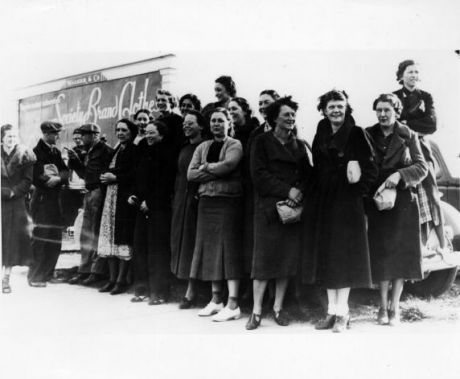Features
You are here
Occupy! Women during the 1937 Flint sit-down strike

March 1, 2012
The 1937 Flint sit-down strike is one the most famous episodes of US labour history, but the role of women is almost unknown. But the strike would not have succeeded without the Women’s Emergency Brigade, who kept the strike going, challenged dominant ideas about women, and through the process changed themselves.
The United Auto Workers formed in 1935 and realized that to organize the auto industry it would have to challenge its biggest employer, General Motors. In December 1936 a sit-down strike began at GM’s plant in Flint, Michigan.
The bosses and the police tried to isolate the workers from the broader community, but women broke through police lines to join the strike, and appealed to other women to join them. This produced the Women’s Emergency Brigade, composed of the wives and sisters of workers involved in the strike and led by a 23 year old socialist, Genora Johnson (For footage and interviews, watch the 1979 documentary “With babies and banners”, produced and directed by women).
They not only ran the union kitchen that provided food for the strikers, but also provided picket defense. Women who had just a few weeks before been confined to the home began carrying clubs in their sleeves to fend off police and scabs, and to break the windows of the occupied plants to provide air when police attacked the strikers with tear gas.
Women in Flint, Michigan organized solidarity, including picket duty, during the pivotal 1937 sit-down strike.
Women were crucial to the sit-down strike, which won in February 1937 when GM recognized the UAW. This triggered a wave of unionization across the auto industry, while the women continued challenging the sexism of the union leadership.
The relevance of the history of the Flint strike to today couldn’t be clearer. In a time of global economic crisis and austerity, the example of real solidarity breaking down the barriers between men and women, black and white, immigrant and non-immigrant workers shows the way forward.
This is the lesson that Republic Doors & Windows workers outside Chicago, who have once again re-occupied their plant, are learning again. Women have been, and will continue to be, central to the new struggles of workers world-wide.
Section:
- Log in to post comments










